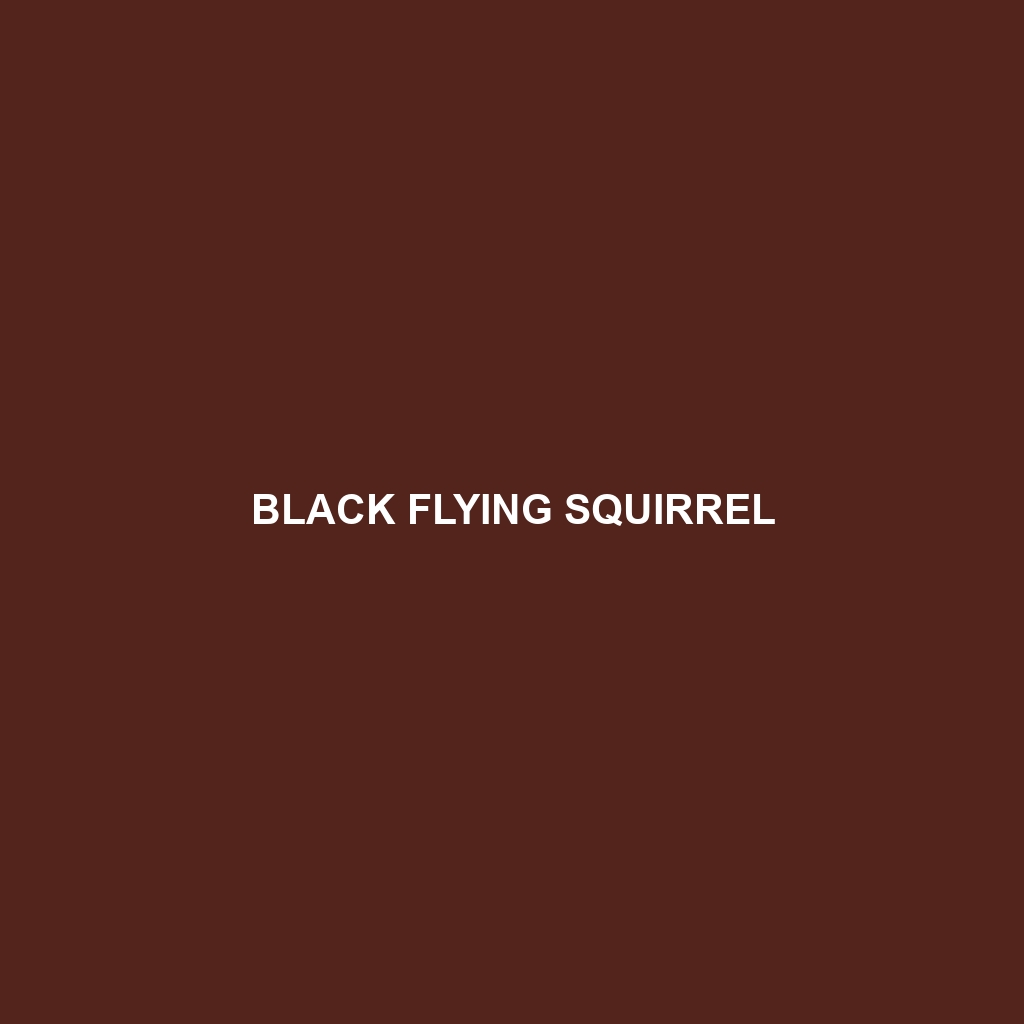Black Flying Squirrel: A Unique Gliding Mammal
Common Name: Black Flying Squirrel
Scientific Name: Petaurista alborufescens
Habitat
The Black Flying Squirrel is primarily found in the forests of eastern and southeastern Asia, particularly in countries such as China, India, and Japan. This species thrives in dense, mature forests that provide ample tree cover, which is essential for its gliding abilities. The presence of hardwood trees, especially oak and maple, is crucial, as these woods supply the necessary nesting sites and food resources.
Physical Characteristics
The Black Flying Squirrel displays a striking appearance, characterized by its dark fur and large, membranous patagium—the skin that stretches from its forelimbs to hind limbs, allowing for remarkable gliding prowess. Adults typically weigh between 1.5 to 2.5 kilograms and measure about 40 to 50 centimeters in length, including the tail, which is nearly as long as its body. Its large eyes and rounded ears are distinctive features, aiding in nocturnal activity.
Behavior
Black Flying Squirrels are primarily nocturnal, exhibiting behaviors that help them adapt to a life of gliding and foraging in the dark. These social animals often reside in small groups, using vocalizations to communicate. Their gliding ability allows them to traverse vast distances between trees while avoiding ground-based predators. They are also known for their playful antics, which include leaping from tree branches and performing aerial maneuvers.
Diet
The diet of the Black Flying Squirrel consists mainly of fruits, nuts, seeds, and tree bark. They have a strong preference for soft fruits such as berries and figs, which are abundant in their forest habitats. Occasionally, they may consume insects or small invertebrates, providing a well-rounded nutritional intake. Their foraging habits often lead them to forage on various tree species, highlighting their role in seed dispersal within forest ecosystems.
Reproduction
Black Flying Squirrels typically breed once or twice a year, with the breeding season peaking in late spring to early summer. After a gestation period of approximately 45 days, females usually give birth to a litter of 2 to 4 offspring. The young remain in the nest for several weeks, relying on their mother for nourishment. Parental care is crucial, as mothers are responsible for nurturing the young until they become independent.
Conservation Status
The Black Flying Squirrel is classified as “Near Threatened” by the International Union for Conservation of Nature (IUCN). Habitat loss due to deforestation and urbanization poses significant threats to their population. Conservation efforts are essential to protect their natural habitats and ensure the sustainability of this unique species.
Interesting Facts
One fascinating aspect of the Black Flying Squirrel is its ability to glide up to 150 feet (approximately 45 meters) in a single leap. This remarkable adaptation not only conserves energy but also enhances survival by allowing them to escape from predators efficiently. Additionally, they are capable of rotating their bodies mid-air, which aids in landing accurately on tree branches.
Role in Ecosystem
As herbivores, Black Flying Squirrels play a vital role in their ecosystems by aiding in the dispersal of seeds, which facilitates forest regeneration. Their interactions with other species, including plants and insects, contribute to the overall health and diversity of their habitats, making them an integral part of forest ecology.
